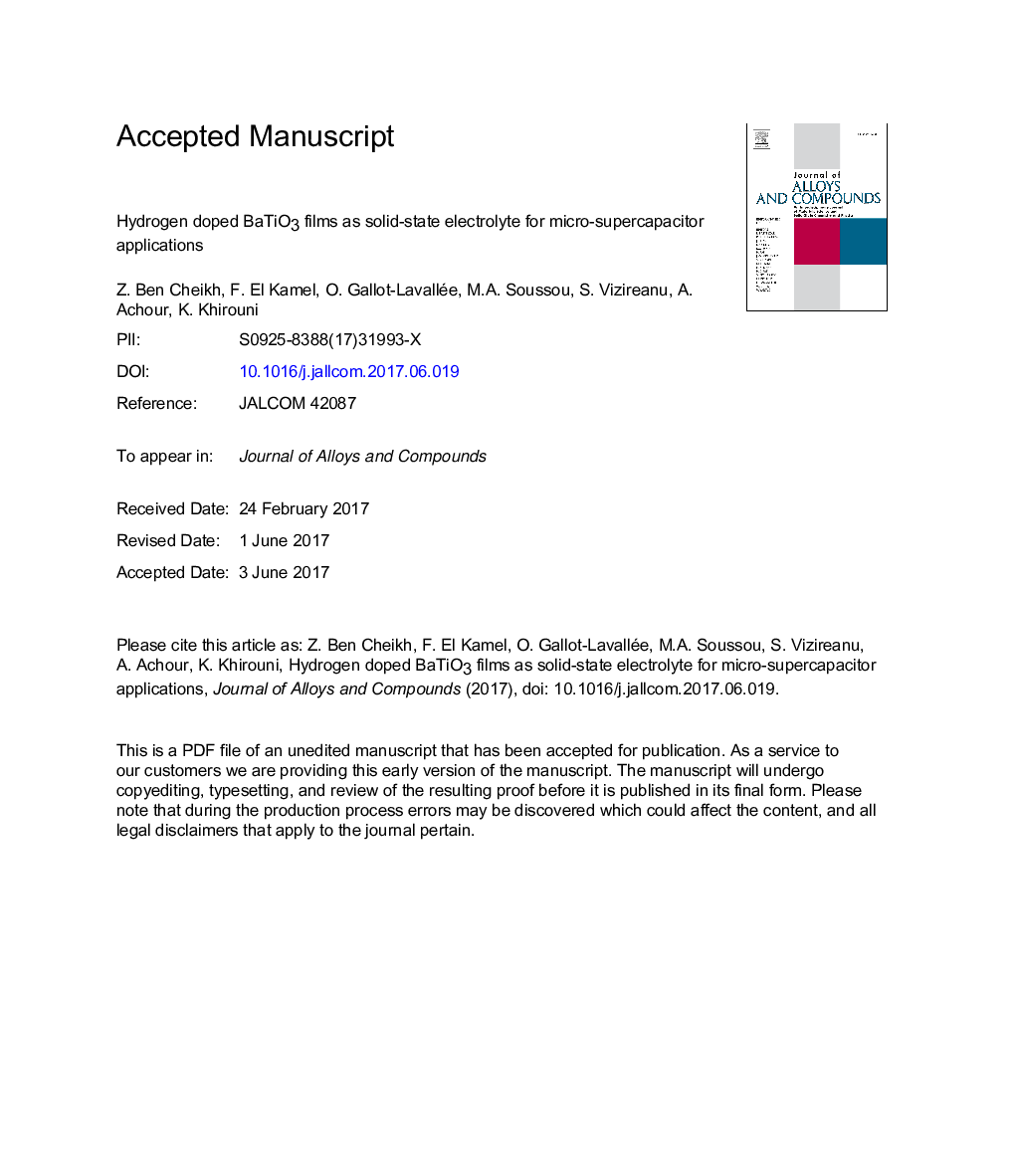| Article ID | Journal | Published Year | Pages | File Type |
|---|---|---|---|---|
| 5458603 | Journal of Alloys and Compounds | 2017 | 38 Pages |
Abstract
Solid electrolytes are important part of all-solid state energy systems that store electrical energy on the chip. They allow a direct incorporation of micro-storage component with simple device architecture while operating at higher temperatures compared to liquid electrolytes. However, solid electrolytes are usually deposited at high temperatures, exceeding the thermal budget of current semiconductor technology. Herein, we report on the synthesis of high performance BaTiO3:H films as solid state electrolyte in which we incorporate protons during a room temperature RF sputtering process. Drastic changes occur on chemical, structural and electrical properties of the films when they accommodate highly mobile and reactive protons. BaTiO3:H films have well-defined crystalline phases and display an optical bandgap which decreases by increasing the HMR in the sputtering gas. In addition, these films show two relaxation processes. The first, thermally activated with an energy around 0.5Â eV, emerges at low temperature due to the proton diffusion within the oxide material. The diffusion of positively charged oxygen vacancies by overcoming an energetic barrier of about 1.1Â eV yields to a second relaxation which takes place at relatively high temperature. By using carbon nanowalls as high effective area bottom electrode, we anticipate a large specific capacitance.
Keywords
Related Topics
Physical Sciences and Engineering
Materials Science
Metals and Alloys
Authors
Z. Ben Cheikh, F. El Kamel, O. Gallot-Lavallée, M.A. Soussou, S. Vizireanu, A. Achour, K. Khirouni,
